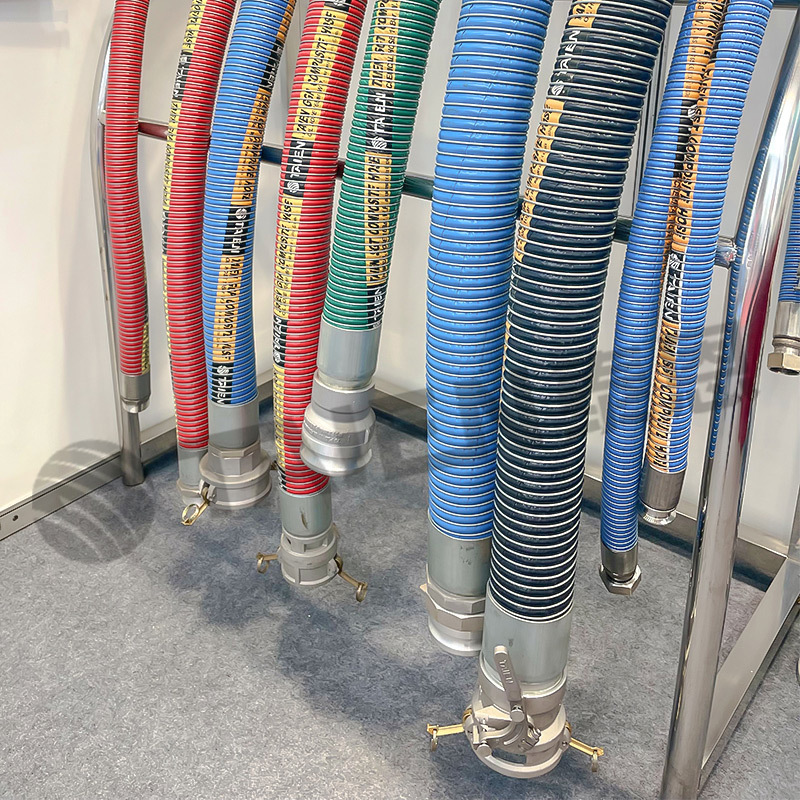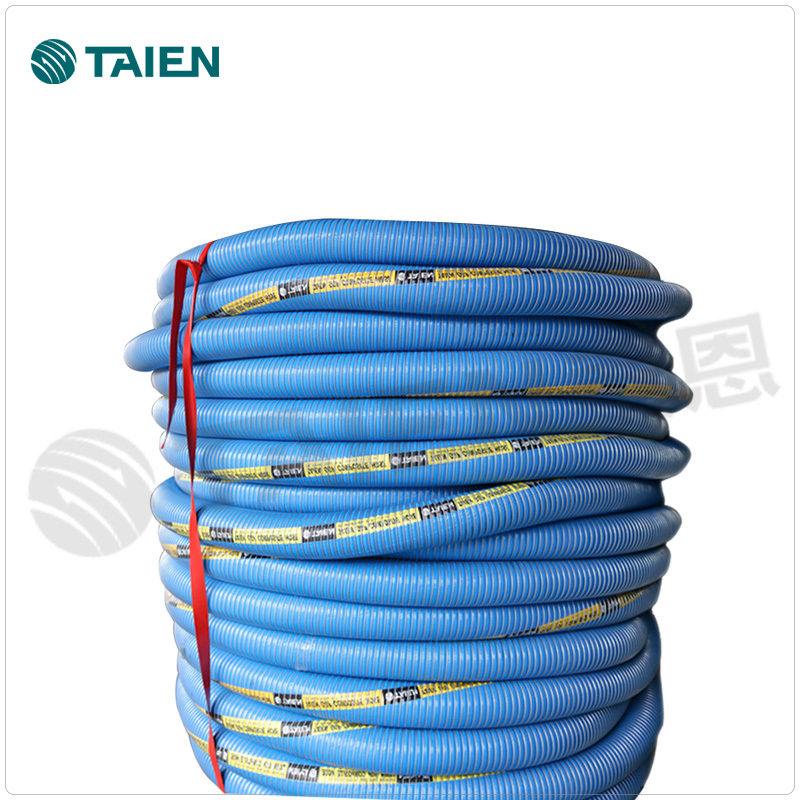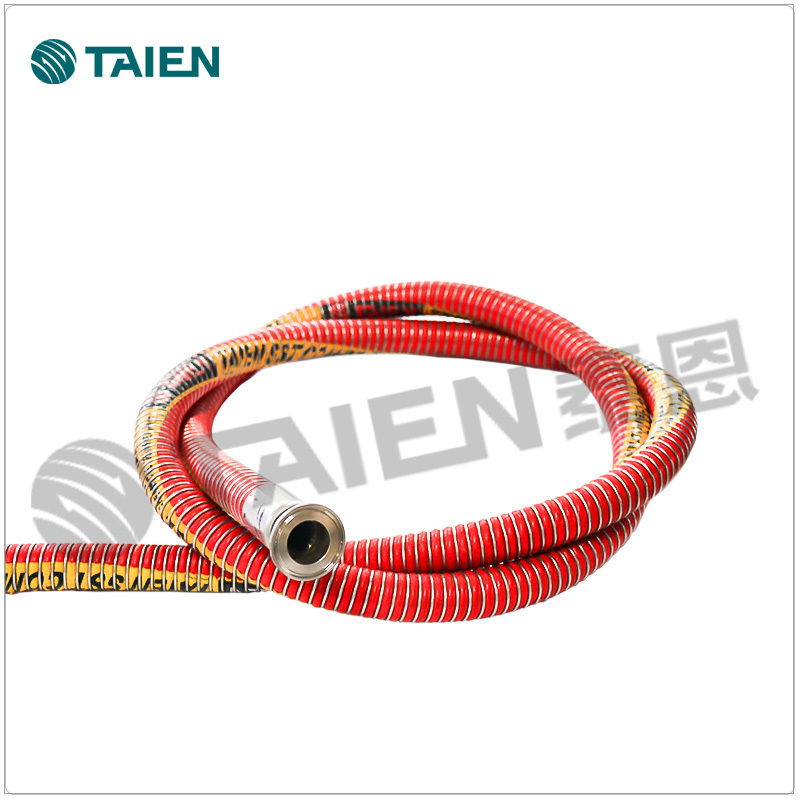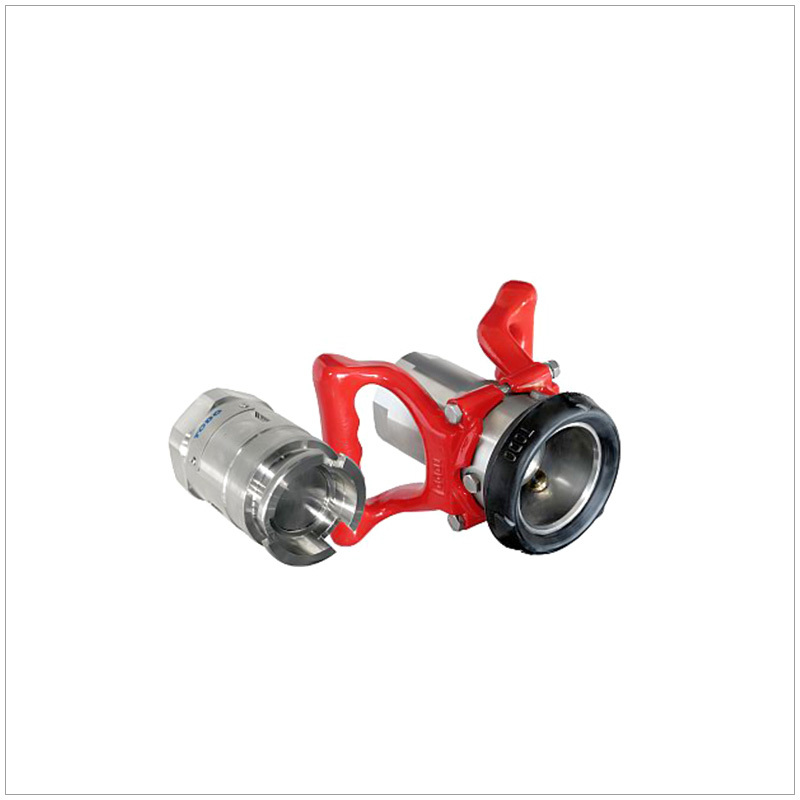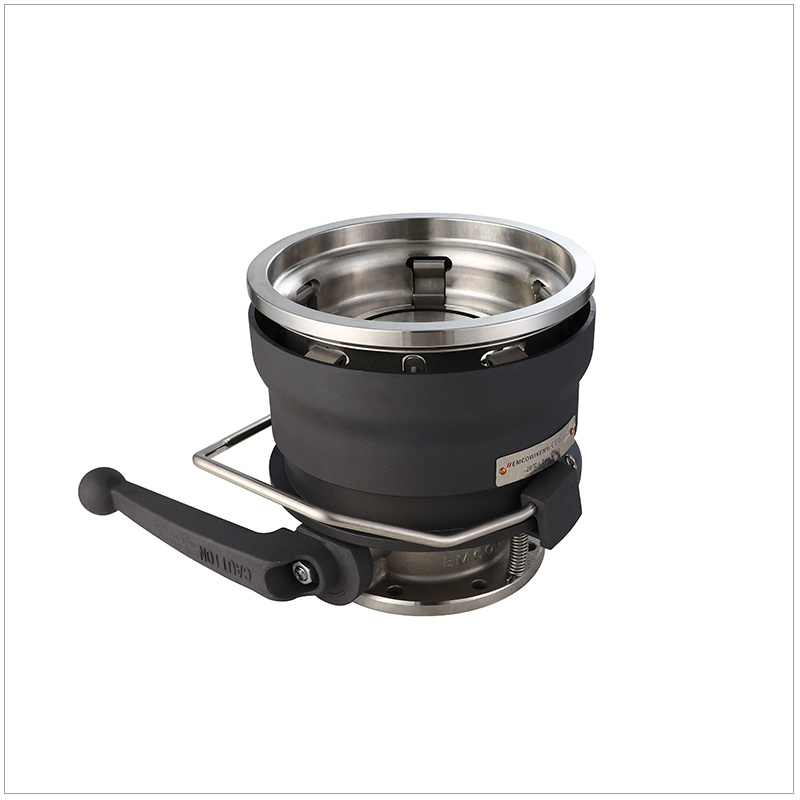The Future of Chemical Hoses: Innovations and Emerging Technologies
Release time:
2025-08-06
Author:
Source:
Abstract
The Future of Chemical Hoses: Innovations and Emerging Technologies
Chemical hoses are crucial components in various industries, including manufacturing, pharmaceuticals, and agriculture. As global demands evolve and new regulations emerge, the need for innovative solutions in chemical hose technology becomes paramount. This article explores the future of chemical hoses, focusing on trends and tec
The Future of Chemical Hoses: Innovations and Emerging Technologies
Chemical hoses are crucial components in various industries, including manufacturing, pharmaceuticals, and agriculture. As global demands evolve and new regulations emerge, the need for innovative solutions in chemical hose technology becomes paramount. This article explores the future of chemical hoses, focusing on trends and technologies that are paving the way for enhanced performance, safety, and sustainability.
Table of Contents
1. Understanding Chemical Hoses
2. Key Trends Shaping the Future of Chemical Hoses
2.1. Advancements in Materials
2.2. Improved Design and Engineering
2.3. Sustainability and Environmental Considerations
3. Technological Innovations in Chemical Hoses
3.1. Smart Hose Technology
3.2. Enhanced Safety Features
4. Regulatory Changes Impacting Chemical Hose Development
5. The Role of Industry 4.0 in Chemical Hose Manufacturing
6. FAQs About Chemical Hoses
7. Conclusion
1. Understanding Chemical Hoses
Chemical hoses are specialized tubes designed to transport chemicals safely and efficiently. These hoses must withstand various conditions, including extreme temperatures, corrosive substances, and high pressures. A thorough understanding of the materials and construction techniques used in chemical hoses is crucial for ensuring reliability and longevity.
Manufacturers utilize a variety of materials for chemical hoses, including rubber, thermoplastics, and metal. Each material offers unique benefits, making it essential for industries to select the right hose for their specific applications. For instance, rubber hoses are often favored for their flexibility and durability, while thermoplastics provide excellent chemical resistance.
2. Key Trends Shaping the Future of Chemical Hoses
The landscape of chemical hoses is continuously evolving, driven by technological advancements, changing consumer demands, and regulatory requirements. Here are some key trends that are shaping the future of chemical hoses.
2.1. Advancements in Materials
One of the most significant trends in chemical hose technology is the development of advanced materials. Manufacturers are increasingly turning to high-performance polymers and composites that offer enhanced resistance to chemicals and environmental conditions. These materials not only improve the lifespan of the hoses but also reduce the overall weight, making them easier to handle and install.
For example, hoses made from fluoropolymer materials exhibit excellent chemical resistance, making them ideal for transporting aggressive substances. Additionally, the introduction of lightweight materials is helping to improve operational efficiency and reduce energy consumption during transportation.
2.2. Improved Design and Engineering
The design and engineering of chemical hoses have also seen substantial improvements. Modern hoses are designed using advanced computer-aided design (CAD) software, allowing manufacturers to create more complex shapes and configurations. These designs ensure optimal flow rates and reduce turbulence, ultimately enhancing performance.
Moreover, manufacturers are adopting a modular approach to hose design, allowing for easy customization based on specific application requirements. This flexibility enables industries to select hoses that meet their unique needs while maintaining high standards of safety and performance.
2.3. Sustainability and Environmental Considerations
The push for sustainability is influencing the chemical hose industry as well. Manufacturers are increasingly focused on producing eco-friendly hoses that minimize environmental impact. This shift is driven by growing consumer awareness and stricter regulations regarding waste and emissions.
Sustainable materials, such as biodegradable polymers, are being explored for hose production. Additionally, manufacturers are implementing recycling programs to ensure that used hoses are disposed of responsibly. This commitment to sustainability not only benefits the environment but also enhances a company's reputation in the marketplace.
3. Technological Innovations in Chemical Hoses
Technological advancements are revolutionizing the chemical hose industry, introducing features that enhance safety, performance, and convenience. Here are some of the key innovations to watch for in the future.
3.1. Smart Hose Technology
Smart hose technology is emerging as a game-changer in chemical transport applications. These hoses are equipped with sensors that monitor various parameters, such as pressure, temperature, and flow rate. The data collected can be transmitted to a central system, enabling real-time monitoring and analysis.
The integration of smart technology enhances safety by providing early warnings of potential issues, such as leaks or pressure build-up. This proactive approach allows for quicker responses to potential hazards, thereby minimizing risks and ensuring the safety of personnel and the environment.
3.2. Enhanced Safety Features
Safety is paramount in chemical transport, and manufacturers are continually developing features to enhance hose safety. Innovations such as crush-resistant designs, flame retardant materials, and double-walled constructions are becoming more prevalent.
Crush-resistant hoses are designed to withstand external pressures without collapsing, ensuring a continuous flow of chemicals even in challenging conditions. Double-walled hoses provide an additional layer of protection against leaks, making them ideal for transporting hazardous substances.
4. Regulatory Changes Impacting Chemical Hose Development
The chemical hose industry operates in a highly regulated environment, with numerous standards governing production and performance. Recent regulatory changes are impacting how manufacturers approach hose design and production.
New regulations focus on improving safety and reducing environmental risks associated with chemical transport. Compliance with these regulations often requires significant investments in research and development, leading to the creation of more advanced and safer hose technologies.
Manufacturers must stay informed about these regulatory changes to ensure their products meet or exceed the required standards. This commitment to compliance not only enhances safety but also builds trust with customers and stakeholders.
5. The Role of Industry 4.0 in Chemical Hose Manufacturing
The advent of Industry 4.0 is transforming manufacturing processes across various sectors, including chemical hoses. This new industrial paradigm integrates advanced technologies such as the Internet of Things (IoT), artificial intelligence (AI), and automation into manufacturing operations.
In the context of chemical hose manufacturing, Industry 4.0 facilitates improved efficiency and reduced production costs. Smart manufacturing techniques enable real-time monitoring of production processes, allowing for quick adjustments based on real-time data. This agility helps manufacturers respond to changing market demands while maintaining high product quality.
Additionally, automation in production lines reduces the risk of human error, ensuring consistency and precision in hose manufacturing. As Industry 4.0 continues to evolve, its impact on the chemical hose industry will only become more pronounced.
6. FAQs About Chemical Hoses
What are chemical hoses made of?
Chemical hoses can be made from various materials including rubber, thermoplastics, and metal, depending on the application and the chemicals being transported.
How do I choose the right chemical hose?
Choosing the right chemical hose involves considering factors such as the type of chemicals being transported, temperature and pressure requirements, and the hose's flexibility and durability.
What is smart hose technology?
Smart hose technology refers to hoses equipped with sensors that monitor parameters such as pressure and flow rate, allowing for real-time tracking and analysis.
How can I ensure the safety of chemical hoses?
Ensuring the safety of chemical hoses involves regular inspections, proper handling, and maintenance, as well as using hoses designed with safety features.
What are the environmental benefits of modern chemical hoses?
Modern chemical hoses often incorporate sustainable materials and designs that minimize environmental impact, reduce waste, and promote recycling efforts.
7. Conclusion
The future of chemical hoses is bright, characterized by innovative trends and technologies that enhance performance, safety, and sustainability. As industries continue to evolve, the need for advanced chemical hose solutions will only grow. By embracing advancements in materials, design, and smart technologies, manufacturers can ensure that their products meet the demands of modern applications while prioritizing safety and environmental responsibility. The ongoing development in the chemical hose industry promises a safer, more efficient, and eco-friendly future for all stakeholders involved.
Recommended Reading







